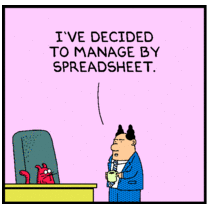The new Business Data Catalogue (BDC) is an interesting interface into the Line of Business (LOB) databases out there than can be accessed by the ADO.NET providers (SQL, Oracle, ODBC, OLEDB) or web services. SharePoint 2007 comes with some great OOB web parts that allow you to quickly design dashboards based on the LOB data.
BDC List: This web part will simply display your data in a list form with all of the filtering and sorting capabilities that you’d expect in a list view webpart. It even has a built-in search interface which allows users to perform mini searches on the contents of the list.
BDC List Item: When connected to the BDC List, it will display further details for the item that is selected. The idea is that you click a list item on the BDC List of resellers and the BDC List Item webpart displays additional information stored in that List row.
BDC Search: BDC applications can be ‘indexed’ by the standard MOSS index service. This means that users can search across the business systems amongst all of the other data in the MOSS index. Results are presented in the same way as other documents and when the users click on a result, them get sent to an out-of-the-box ASPX page that shows all of the data that is available for that item. The BDC applications are treated as normal content sources and can be managed in exactly the same way (schedules, scopes etc).
BDC Columns: One of the new column types in MOSS is ‘Business Data’. If you select a business data column, users will be able to choose an entity from the BDC to store as the value of a column (metadata).
BDC Profiles: Like BDC columns, you can also create ‘business data’ properties in the MOSS user profile database. This means that the user profile can now be a mixture of MOSS-based, Active Directory and business data information.
This is a very powerful tool for quickly creating dashboards within SharePoint from already existing applications that store their information in existing databases. You can quickly create executive dashboards and surface business information in a way that management and information workers can quickly consume and base decisions on without ever having to touch the original application, which may have been custom built or shrink wrapped. Basically, if you can get to the back-end data, you can use it to create new and interesting dashboards without having to crack open the original LOB application.
Sound interesting? Learn more here.


